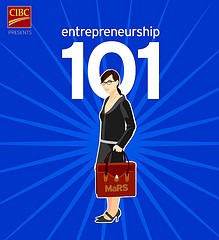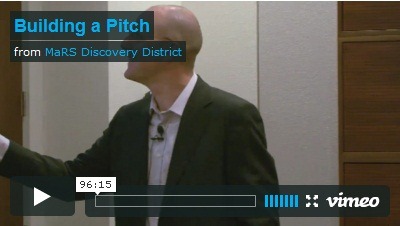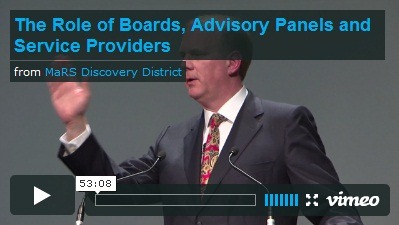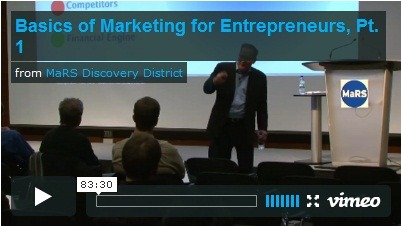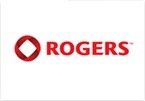 So what’s the story with Rogers Ventures?
So what’s the story with Rogers Ventures?
Mic Berman announced StartupCampWaterloo(Serious Edition) happening on October 20, 2009 in Waterloo, ON. Jesse Rodgers provided a little more detail about the event on the BarCampWaterloo Google Group:
“Rogers Ventures has started an early stage/seed round investment group. They are looking to make several investments before the end of this year and they have a strong commitment to fund and support entrepreneurs or post doc researchers who have great ideas and/or innovative technology.
If are looking for funding and would like to pitch the Rogers’ team (Mike Lee, Nyla Ahmad or Jason Zan) and a few other local funders such as Tech Capital.”
We’ve worked with Mike Lee to host DemoCamp Toronto 21 & 22 (an Evening with Yossi Vardi). Rogers Ventures has already demonstrated their ability and willingness to engage with the community. Rogers Ventures continues to reach out and engage with entrepreneurs across the country.
Press Release
Rogers Ventures publically launches on October 15, 2009. Here are the details provided by the consultants and public relations individuals helping Rogers Ventures engage the development community.
What is Rogers Ventures?
Rogers Ventures is a new source of early stage seed level investment for technology start-ups. We find great talent with powerful ideas and we invest in their business success. We invest our money, leverage, experience and other strategic contributions to get our portfolio companies on the path of accelerated development and market growth. Another part of the Rogers Ventures’ mandate is supporting the innovation ecosystem by providing direct funding to community programs that help create innovation momentum in this country.
Is Rogers Ventures a venture capital firm?
We operate a venture-style funding mechanism (we approve investments on a case-by-case basis) but that’s where the similarities end. Our long-term objective is to develop a portfolio of high potential companies that capture the value created through wireline and wireless broadband networks.
Why was Rogers Ventures created?
We’re living at a time when technology innovation, new online services and shifts in consumer behaviour are being adopted faster than any other time in history. We want to be part of this innovation and the opportunity presenting themselves but realize that we cannot achieve success, as effectively, on our own. Rogers Ventures is our way of looking beyond the walls of Rogers for outside talent and ideas to fund. We believe that this will broaden our innovation horizons and keep us closer to the forefront of next-generation technology.
How will Rogers Ventures support the high-tech community?
While we see a significant amount of energy and activity within the Canadian innovation landscape, we feel that there are opportunities for support for the Canadian ecosystem to accelerate momentum. We have been working to identify community-level programs or initiatives that require support – either money, a space large enough to hold events, someone to pay for pizza, participation in mentorship, contribution as a speaker, whatever – and we try to make that support happen. We know that our effort is not the total solution. We are contributing our part to build the necessary momentum and are committed to engage.
Who runs Rogers Ventures?
Melinda Rogers, senior vice-president, strategy and development with Rogers Communications, is the executive in charge of Rogers Ventures. On a day-to-day basis, the portfolio is run by Mike Lee, vice-president with Rogers Ventures, and Nyla Ahmad, vice-president, Rogers Ventures Operations.
What are Rogers Ventures portfolio companies?
There are currently three companies within the Rogers Ventures portfolio: Zoocasa, a vertical search product focused on real estate; Thoora, a next generation news discovery service; and GridCentric, a solution for grid computing. We don’t discuss publically investment levels.
Is Rogers Ventures a part of Rogers Communications?
Rogers Ventures falls within Rogers’ corporate strategy and development group and it is legally part of Rogers Communications Inc. However, it operates as a separate entity on a day-to-day basis.
Additional Team Details
So who are Mike Lee, Nyla Ahmad and Jason Zan and others. We can start to piece together the players from web searches, management profiles of their portfolio companies, and social media tools.
“Mike Lee, Chief Strategy Officer, Rogers Communications Inc.
Michael (Mike) Lee is Chief Strategy Officer for Rogers Communications Inc. Mike is responsible for strategy development, new venture development, and strategic partner management for the Rogers Communications’ group of companies which include Rogers Cable, Rogers Wireless and Rogers Media. Previously, he held the role of Vice President, Strategy and Development for Rogers Cable.” Cable Congress 2009
“Nyla Ahmad, Senior Director, Strategic Partners for Rogers Communications Inc.
Nyla Ahmad is responsible for overseeing and managing key cross-company relationships. This includes managing the Rogers Yahoo! strategic alliance across the entire Rogers group of companies. Previously within Rogers, Ms. Ahmad held roles within Rogers Cable and the Internet division of Rogers Media. As Senior Director of Electronic Channels for Rogers Cable Communications Inc. she was responsible for the product development, online services strategy and customer experience for Rogers Yahoo! Hi-Speed Internet. As Vice President of Excite Canada, she oversaw the development of consumer online content and services across broadband, narrowband and wireless platforms.” 3rd Annual C-COR Global IP Summit – Executive Interviews
“Jason Zan, Co-founder and adviser
Jason was a Sr. Director of Business Development at Rogers Communications Inc. (NYSE:RG), the largest wireless carrier in Canada. Prior to that Jason was Director of Venture Investments at Rogers where he was responsible for managing the company’s private equity investment portfolio. Jason has a HBA from Ivey Business School, University of Western Ontario, Canada.” Tokia > About Management
The team at Rogers also includes for former PlanetEye CEO Butch Langlois, who announced in Jun3 2009 that he was joining Rogers Ventures. Butch has a strong histo
ry with Rogers serving as VP, Finance and Corporate Development in the old Rogers New Media group.
The team has a very strong Rogers flavour. It will be interesting to see if they are able to break free from the corporate culture that tends to lead to “The Innovator’s Dilemma” to identify opportunities. Their current investments in Zoocasa, Thoora and GridCentric show a desire to commercialize research efforts, both Thoora and GridCentric are commercialized out of the University of Toronto projects and teams. Rogers Ventures seems to be making an effort to move beyond their traditional boundaries.
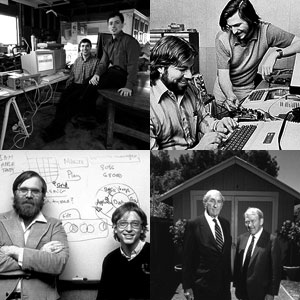 The hours at a startup might be long and the pay might just cover a six inch sub, but there is nothing more rewarding than being part of a team out to change the world.
The hours at a startup might be long and the pay might just cover a six inch sub, but there is nothing more rewarding than being part of a team out to change the world.
